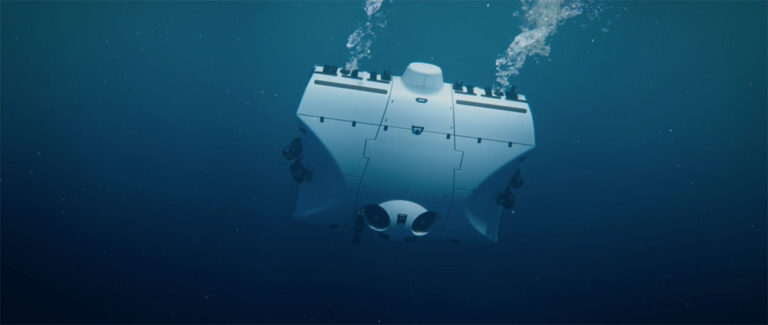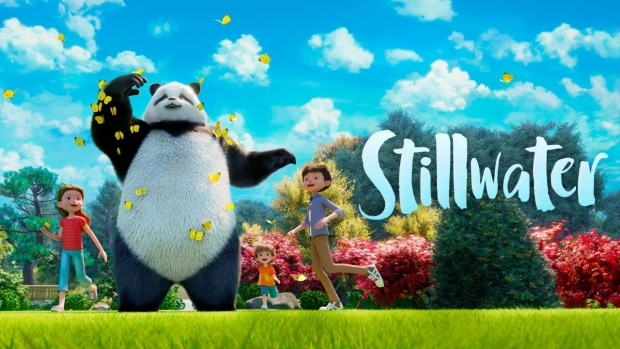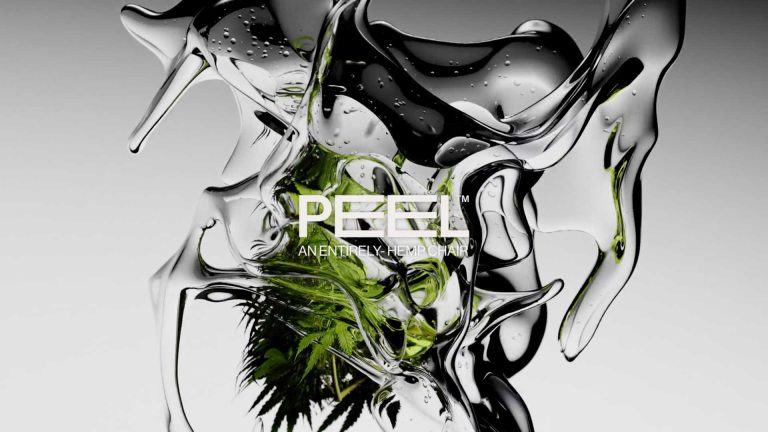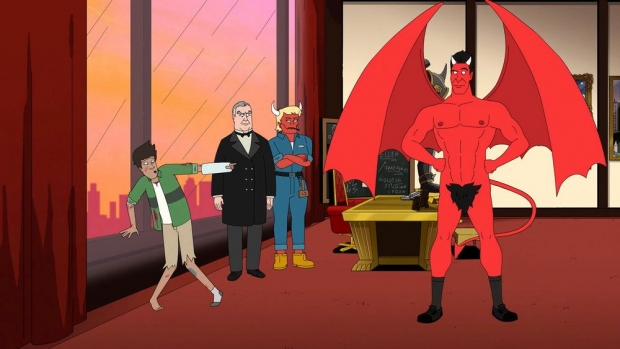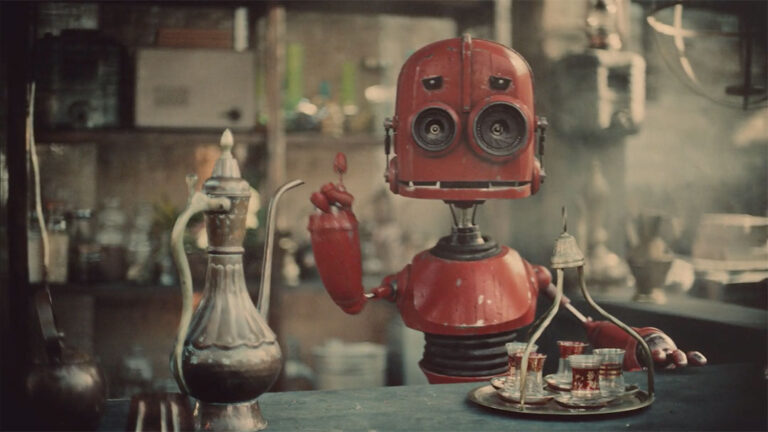— Nick Kondo 近藤 (@NickTyson) May 7, 2021
The Design of The Mitchells vs. the Machines

NK: It was surprising (or maybe not surprising?) to see that after a 2-week or so hiccup while we all moved home, we were back to 100% output. Sony has always worked remotely from Vancouver with its counterpart in LA, so much of our technology and workflow was already based around being remote.
In terms of animating the human characters, we pushed for subtlety in the performance, both in acting choices and in our execution of the animation. We weren’t doing a flourishy, hyper-polished style of animation, so for a lot of the film we were pulling back the reins and looking at, for example, what the fingers would be doing.
TR: Hitting the specificity that Mike Rianda, our director, was looking for was a big challenge. He talked early on in production about the acting in Children of Men and On The Waterfront, so we knew that he had high expectations in terms of performance.
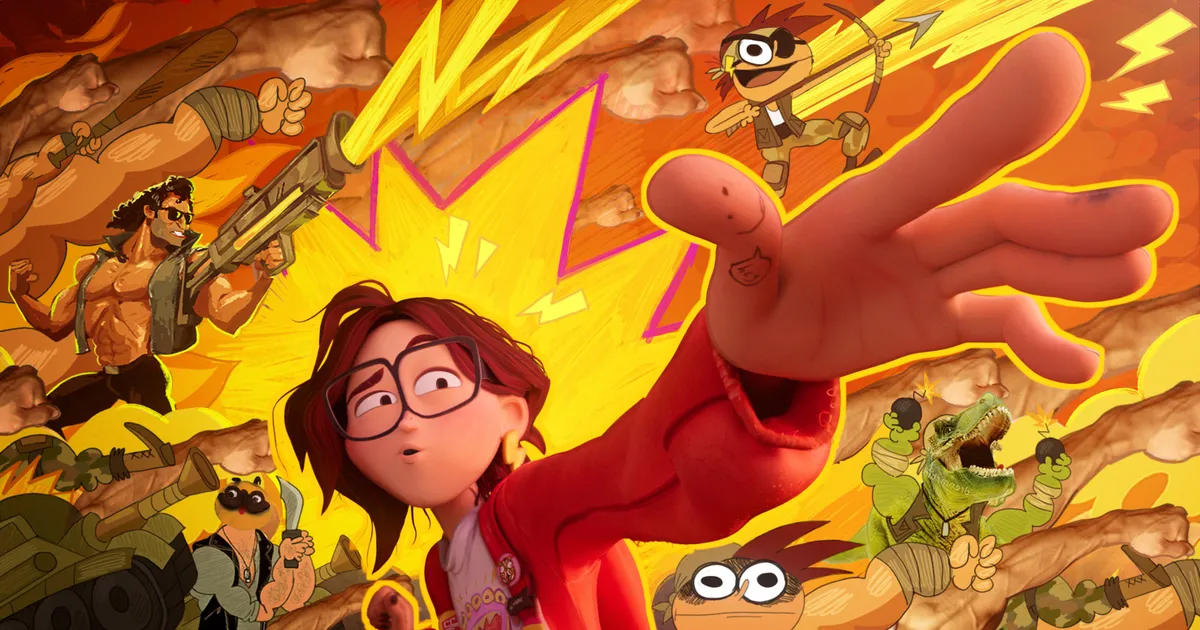
[embedded content]
TR: I think animation reference in a cartoony film depends on the style. Angry Birds could lean well into reference, for example, but we wouldn’t use it on a highly exaggerated film like Hotel Transylvania.
NK: I think what I enjoyed most was the pure uniqueness of the show. I was given the opportunity to work on a couple shots that are so unusual, funny, and wild. These shots could only exist in this movie. I have the writer/directors, Mike Rianda and Jeff Rowe, and the Head of Story, Guillermo Martinez, to thank for that.
TR: Knowing that you’re contributing to something unique was the best part of the project for me. When so much of the film industry is geared towards releasing existing properties and franchises, it was exciting to be on an original production that was driven by personal storytelling and wanted to push away from the norm into experimental territory. It’s this kind of filmmaking that got me excited about animation as a career.
When so much of the film industry is geared towards releasing existing properties and franchises, it was exciting to be on an original production that was driven by personal storytelling
– Tim Rudder
The eye designs for example are reminiscent of The Simpsons or Gravity Falls and early on it felt like the characters were always staring, wide-eyed with fear. It took time and experimentation to figure out how to stay true to those designs while also adding the intricacy and nuance of emotion and expression that comes along with 3D feature animation.
TR: Insider tip: When we were creating background characters, we’d often base them on real people. My partner can be seen typing on a laptop at the PAL conference, Nick and his wife are walking arm in arm in some shots, and our animation director, Alan Hawkins, can be found hanging out on the college campus as the Mitchells say goodbye.
Learn Cartoony Animation from pro animators who have created dynamic, stylized animation for studios like Sony, Pixar, and Warner Bros. Mentors have worked on amazing films like Spider-Man: Into the Spider-Verse, Toy Story and The Mitchells vs. the Machines! Visit our website to learn more about this exciting workshop.
AM: Any other behind the scenes details you want to share?
In the case of The Mitchells, there were a lot of subtle acting scenes that needed to be grounded in reality. We found early on that animators who were showing reference to the director were getting shots to final more smoothly, so it was something that was encouraged and used widely. When we were getting into action sequences we tended not to use video reference, as graphic shapes and poses started to take more prominence than realism.
Action shots, however, were where we could let loose in our choices, instead of, “How subtle can we go?” discussions turned into, “How wild can we go?” which was a lot of fun.
AM: The pandemic was challenging for a lot of industries. What was it like creating this film remotely? What challenges and successes did this model provide? Would you like to see more remote productions done?
Not just for the killer boards by @billybobmartinz & anim by @timrudder @TobyPedersen Sam Verschraegen & Matt Shepherd
I also supervised a few sequences which included shot assignment, helping animators hit director/animation director notes, providing estimates for the production team and working with other departments when needs arise. The role also had some other random elements pop up here and there, for example unique shots for the trailer, managing interns and helping to test tools before they’re rolled out to the entire team.
AM: We’re huge fans of excellent video reference at Animation Mentor. Did creating such a cartoony animation style change your approach to reference footage for this film?
There is a huge reduction and change to our social interactions, our workdays are more sedentary and it’s much easier to work longer than we would otherwise. So while I think most are happy with some kind of hybrid remote work life going forward, we still need to be aware and proactive to reduce how it can negatively affect us.
At first working within those limitations seemed a little odd and confining to us, but over time we saw that the characters could still convey emotion convincingly and we got used to working within the constraints.
[embedded content]
1 of my fav parts of ‘The Mitchells Vs. The Machines’!
Cartoony Animation in the Film
I find that animators enjoy themselves the most when they feel like their own ideas are making it onto the screen. And if not, that they are at least getting the chance to pitch their own ideas. The vast majority of my time was spent doing draw-overs and giving or clarifying notes to help animators walk the line of giving the directors what they want while keeping their own ideas intact.
TR: Well in my own case, the role was a little more varied from a typical supervising animator. For the first few months I was overseeing crowd animation—we had animators spend a week each designing background characters and creating cycles that could be used later in production.
The best part of working remotely for me has been the added time to my day, and the flexibility for working overtime when needed.
– Nick Kondo
AM: Was there a particular vision for the animation in The Mitchells vs. the Machines? What have you been able to explore from an animation perspective that has been fun?
Two early challenges with that mix were lip sync—keeping emotional scenes subtle when mouth shapes were so graphic and exaggerated—and also keeping the eyes large and round per the model sheets limited our ability to use lids or eye shape to hit certain expressions.
AM: What does a supervising animator do on a project like this?
TR: The answer to that really varies between animators as personal circumstances are so different. Hopefully we all agree that there are some great benefits for accessibility: it opens the door wider for people with disabilities, parents with young children, or those who want to settle and own homes outside of highly expensive downtown areas. But I think over a year later we’re also starting to realise the costs in personal wellness as well.
But on this film there was also an extra layer of specificity: if you take Rick and Linda Mitchell for example, they are based on his actual parents, so even if we might be in the ballpark with our acting choices there were very specific traits that the director would still be searching for. It’s not something we could just study on YouTube or glean from the voice actors’ recording footage. It’s something that required Mike to act it out and then we’d do some back and forth until we hit the, “That’s it!” moment.
Life as a Supervising Animator
But I LOVE how willing I am to suspend my disbelief in favor of reveling in Linda’s mom-fueled rampage! pic.twitter.com/XmOXoRdR73
NK: Just like every animator on the project, my job is to deliver animation that is in line with the directors’ vision. But as a supervisor that meant less actual animating and more working with the animators to make sure my team is delivering.
This allowed us animators to hand-craft every frame of their transformations. pic.twitter.com/c0jpGmXaPc
Nick Kondo: While the character designs are quite exaggerated and the movie reaches heights of pure unbelievability at times, the directors always wanted the family to feel relatable and grounded. This created a challenging and interesting contradiction between design and animation.
TR: I think one overall vision from design to animation to rendering was to keep a sense of reality in the human world and a machine-like idea of perfectionism in the PAL world.
Animation Mentor: The Mitchells vs. the Machines is such a cool blend of art styles, much like another Sony blockbuster, Spider-Man: Into the Spider-Verse. Can you talk about how the design influenced the animation?
Virtual Production Pros and Cons
P.S. Check out this video with the film’s producers and director for even more behind the scenes insights.
— Nick Kondo 近藤 (@NickTyson) May 6, 2021
The best part of working remotely for me has been the added time to my day, and the flexibility for working overtime when needed. I was immediately able to regain 2.5 hours of my day spent commuting and put that time directly into spending time with my wife and kids. And rather than have to stay late to work OT, I could spend that same family time first, and then work the OT after the kids were in bed.

On ‘The Mitchells Vs. The Machines’ we developed a super neat tool that could cut the Pal Max Prime robots at any place on the body, separate it, & put it back together again.
The vast majority of my time was spent doing draw-overs and giving or clarifying notes to help animators walk the line of giving the directors what they want while keeping their own ideas intact.
– Nick Kondo
I think one overall vision…was to keep a sense of reality in the human world and a machine-like idea of perfectionism in the PAL world.
– Tim Rudder
AM: What was the most challenging aspect of the film?
NK: I’d say animating the PAL MAX robots (a.k.a. Stealthbots) was the most challenging aspect of the film for me. From a technical standpoint at least. We created a tool that could cut the robot anywhere and then piece it back together again, but even so, there was a shape language to maintain in the way you cut them, and then of course there was the management of all the pieces of the robot once you’d cut it. It was a ton of fun though, and just another example of something that made animating for this show super unique.
AM: What did you enjoy most about working on this project?
Tim Rudder: The Mitchells was an interesting mix where the director was pushing for quite subtle and nuanced acting but at the same time we had characters with distinctly cartoony designs.
NK: Actually, because the directors wanted grounded animation, the shots where video reference was useful meant that I took the same approach to it that I would have on any show. Except that in this case I had to shoot reference of myself pretending to throw up disgusting zero-star truck stop hamburgers in 4 different ways which I’ve definitely never had to do before.
Push your skills with cartoony animation!
The downside of this is the lack of personal contact with the team. While I myself will likely continue to work remotely given the opportunity, I am also looking forward to getting back to team lunches and hangouts, and of course seeing our movies back on the big screen.

